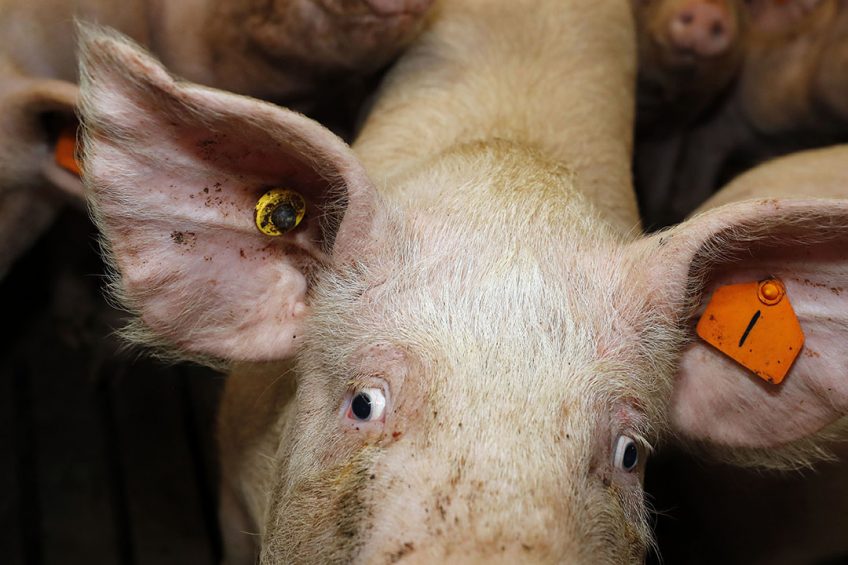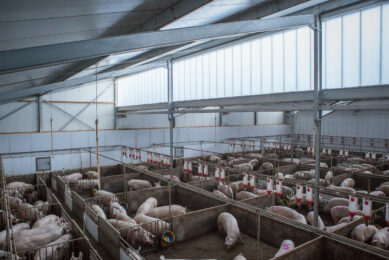Friend or foe? Understanding pig aggression

The phenomenon of pig aggression may be more complex than it seems at the first glance. Why does the animal behave it does – and is it really aggression that is driving him, or is it something else? Let’s try to acquire a deeper understanding of pig behaviour, writes pig welfare expert Dr Monique Pairis-Garcia.
The study of animal behaviour, also known as ethology, is an exciting field to work in as the behaviour of the pig is a fascinating subject that continues to evolve and change. Pig behaviour is influenced by a multitude of factors including how we genetically select our animals for specific traits as well as the environment in which we raise them in.
Understanding pig behaviour is important
For swine producers, understanding pig behaviour is extremely important as it is the direct measurement used to evaluate pig welfare. Evaluating behaviour is the main focus of any good caretaker, as deviations in normal behaviour can be a good indicator that something may be wrong.
Although behaviour can help caretakers identify sick pigs or problems within the environment, they must also deal with unwanted behaviours that can negatively impact and potentially harm those that are working directly with animals in the barn. Aggression is a normal pig behaviour that is performed primarily to establish dominance within a group or defend a highly sought after resource in the environment (i.e. food, water, lying area).
Hierarchy established within 48 hours of mixing
Aggressive behaviour is usually short lived and most unfamiliar pigs will establish a hierarchy and minimise aggressive behaviours within 48 hours of mixing. However, persistent aggressive behaviours towards pen mates or caretakers can result in a negative welfare state for the pigs and worker safety concerns for employees.
In the last 5 years, there has been much discussion on increased aggressive behaviours noted in commercially raised finisher pigs in the United States and major concerns over caretaker safety when walking the pens. Given some finisher pigs can reach up to 300lbs (136kg) by the time they hit market age, handling and managing aggressive pigs at this size can be challenging, particularly in pens with large group sizes. Aggressive behaviours tend to increase in groups of pigs that are constantly mixed (meeting unfamiliar pigs frequently) and do not have adequate space to escape. Pigs are less likely to show aggressive behaviour if they are provided with barriers/hiding areas or environmentally enriched pens.

Dr Monique Pairis-Garcia also touched on the issue of aggression in group housed sows
Exploratory behaviour of finisher pigs
So is aggression all it is? Are these pigs truly aggressive towards caretakers? One consideration is that this behaviour is not aggressive in nature but would more appropriately be defined as an exploratory behaviour. Exploratory behaviour, described as the evaluation and examination of the environment and surrounding unfamiliar area, is a behaviour that is highly motivated to be performed by pigs.
Given most of our commercial finisher systems in the United States lack environmental enrichment, it is possible that the pig’s desire to explore its environment is redirected toward the novel caretaker in the pen. When the caretaker is introduced into the pen they become the novel object that pigs seek out to explore. Addition of environmental enrichment (i.e. straw, toys, cardboard boxes) may help mitigate this redirected behaviour onto caretakers and help prevent caretaker injury when completing chores and tasks in the pen.
Read more Expert Opinions at Pig Progress
Caretakers should be safe, pig welfare should be good
Regardless of the cause of this behaviour, ensuring caretakers are safe and pig welfare is good are critical. If aggressive behaviours persist and caretakers are challenged with performing basic care of the animals, evaluation of the population of pigs and environment are the first steps needed to identify the underlying behavioural problem.











